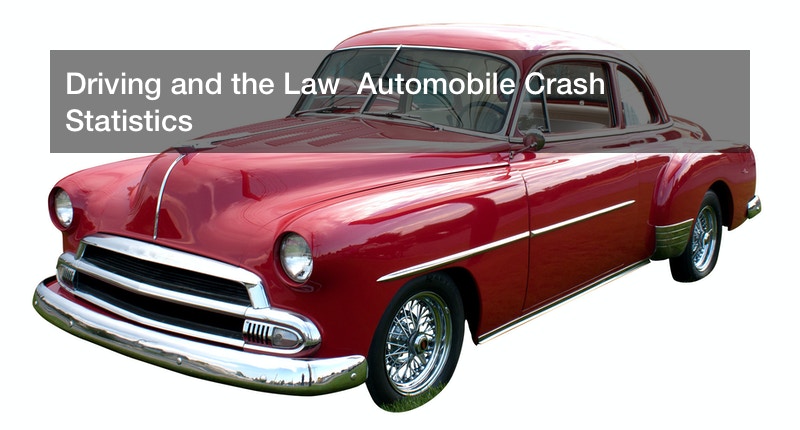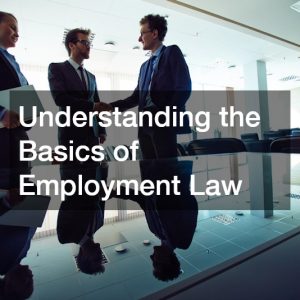
The U.S. National Highway Traffic Safety Administration (NHTSA) collects extensive automobile crash statistics. Even more importantly, the NHTSA analyzes these statistics and publishes them in a report that is available to the public.
This valuable information explains both the causes and costs — in dollars, lives, and injuries — of U.S. automobile crashes. These automobile crash statistics can be used by:
- Drivers: The statistics identify the most common driver-related causes of crashes, including distractions, speeding, and drowsy driving.
- Manufacturers: The NHTSA’s automobile crash statistics identify the most common vehicle-related causes, including tire blowouts, brake malfunctions, and steering problems.
- Municipalities: Cities and counties can use the automobile crash statistics report to learn the most common road and weather conditions to cause crashes, including slick roads, fog, and blind curves.
- Lawmakers: Local, state, and federal officials can use the automobile crash statistics to draft laws and safety regulations aimed at reducing crashes. For example, 48 states have laws that ban texting and driving.
The information collected about automobile crashes is a snapshot into driving and the law. They show where behaviors, regulations, laws, equipment, and roadways can be improved. Here are ten automobile crash statistics and how they affect driving and the law:
Drivers Are the Cause of 94% of Crashes
Drivers are identified as the critical “final event” that causes 94% of automobile crashes. This is not an allocation of fault. For example, these critical events attributed to drivers include medical events, such as a heart attack, that leads to a crash.

However, many of these causes are behaviors that can be avoided. The report broadly divides driver-related events into four categories:
- Recognition error: A recognition error comes when the driver fails to perceive the crash hazard such as distracted driving or improper lookout.
- Decision error: A decision error occurs when either misjudges a situation. For example, following too closely, underestimating an oncoming car’s speed, or making an incorrect assumption about what another car is doing constitute decision errors.
- Performance error: Performance errors occur when a driver does not execute a maneuver even though the driver knows what to do. For example, over-correcting after a turn or losing control of a vehicle are performance errors.
- Non-performance: A driver commits non-performance when the driver is unable to control the vehicle. The most common form of non-performance is falling asleep at the wheel, but medical events can also cause non-performance.
By understanding driver-related causes of crashes, drivers can become safer drivers and avoid such expenses as auto body collision repair.
Over Half of Collisions Involve Exactly Two Vehicles
Car accidents involving three or more cars are rarer than you might expect. Rather, according to automobile crash statistics, two-car accidents are the most common accidents, accounting for over 57% of car crashes. In fact, the second most common accidents involve only a single car. One- and two-car accidents account for 88% of all car accidents and accidents involving three or more cars only occur about 12% of the time.
The reason two-car collisions are the most common is that the two situations that create the most collisions are:
- Vehicle turning: One vehicle is traveling straight and the other vehicle is turning across its path. In other words, the most common collision occurs when a car makes a left-hand turn across traffic.
- Vehicles traveling in the same direction: One vehicle is following the other and either rear-end the leading car or sideswipes the leading car as it passes.
Interestingly, automobile crash statistics show that head-on collisions and T-bone collisions where vehicles collide at 90 degrees to one another are relatively rare compared to the more common scenarios.
This information is useful for both law enforcement, which can reduce accidents by enforcing laws against following too closely. Moreover, your auto insurance agency, can use tickets for speeding, which can play a role in the two most common types of crashes, to determine the likelihood that you will get in an auto collision.
Bigger Is Not Safer

Automobile crash statistics show that cars are safer than both SUVs and trucks in collisions. This might seem counter-intuitive because SUVs and trucks are heavier than cars and, as a result, you might expect them to cause more damage to the other vehicle. However, a few factors make SUVs and trucks less safe than cars in a collision:
- Stability: SUVs and trucks are higher than cars. Moreover, for their height, SUVs and trucks have a relatively narrow wheelbase. As a result, SUVs and trucks are more prone to rollover accidents than cars.
- Same vehicle collisions: When SUVs and trucks collide with other SUVs and trucks, their greater combined weight increases the energy of the crash. With more energetic crashes, more damage is done.
- Types of collisions: As mentioned above, head-on collisions and T-bone collisions are relatively rare. These are the accidents where the additional height and weight would give an advantage to SUVs and trucks. In other types of collisions, stability often plays an important role in determining the seriousness of the injuries.
- Single vehicle accidents: While they are not as common as two-car accidents, about 31% of accidents involve only a single vehicle. When involved in a single-vehicle accident, the risk of rollover makes drivers and passengers of trucks and SUVs more likely to suffer an injury.
This information is important for car buyers. Although you might expect SUVs and trucks to be safer, you should not buy an SUV or truck based on this incorrect assumption. Instead, you should base it on other factors such as personal preference, fuel economy, number of seats, and cost of car maintenance.
Driving Under the Influence Is Very Dangerous
While it might seem intuitive that you should not drink and drive, the automobile crash statistics are shocking at how much your risk increases with just a bit of drugs or alcohol in your system. A blood alcohol level of 0.05 percent — about two cocktails, two bottles of beer, or two glasses of wine — doubles your chances of getting into a car crash. A blood alcohol level of 0.08 percent, the legal limit in 49 states, triples your chances of getting into a car crash.
Not only will drinking and driving increase your chance of being sued by personal injury attorneys when you cause a crash, you could also get arrested. Drinking and driving is a crime in every state and could result in a sentence of jail time, fines, and drug or alcohol treatment.
You could also have your driver’s license suspended. This creates a substantial risk that you could get trapped in the court system. About 75% of drivers who had their licenses suspended due to a DUI continue to drive illegally without their licenses. This could land you in jail again for driving on a suspended license.
Moreover most states allow law enforcement to impound cars pulled over for DUI. As a result, you could be liable for hundreds or even thousands of dollars in towing expenses, storage fees, and impound fees.
Motorcyclists Are 28 Times More Likely to Die in a Crash

When normalized to the risk per mile driven, the risk of dying in a motorcycle crash is 28 times higher than dying in a car crash. A few reasons for this shocking statistic include:
- Visibility: As motorcycle accident attorneys will tell you, most motorcycle accidents occur because a driver failed to see the motorcycle. Whether changing lanes, passing, or turning, motorcycles are less visible because of their smaller size.
- Protection: While the driver and passenger in a car, SUV, or truck have tons of steel to protect them, a motorcyclist is very exposed. In a collision, the motorcyclist can be pinned against the motorcycle, making the motorcycle a liability in a collision rather than protecting the motorcyclist.
- Head injuries: Only 19 states require all motorcyclists to wear helmets. Most states only require young riders to wear helmets and three states have no helmet laws at all. However, motorcycle helmets reduce the risk of head injury by nearly 70% and reduce the risk of death by over 40%.
Distracted Driving is Responsible for Nearly 3,000 Deaths per Year
In the age of cell phones, drivers can be very tempted by distractions. However, distracted driving is very dangerous. At just 30 miles per hour, your car moves nearly 90 feet during a two-second glance at a text on your phone. During this time, you could come upon bicyclists, pedestrians, and other vehicles so quickly that you have no time to stop.
However, text messages are not the only distractions that can lead to auto accidents. Any internal or external distraction can essentially leave you driving blind. Some common distractions include:
- Broken windshield: If your cracked, scratched, or chipped windshield leaves you with blind spots, look into auto windshield replacement or repair before you cause an accident.
- Sound system: Complicated sound systems or streaming music from your phone can require you to take your eyes off the road and hands off the wheel.
- Eating and drinking: Eating, drinking, and spilling can distract your mind and hands from the task of driving.
The legal risk of distracted driving is due to a doctrine called “negligence per se.” Negligence per se is a shortcut for proving negligence. Rather than proving that a driver owed the injured person duty and breached that duty, the auto accident injury lawyers for the injured person can simply prove that the driver broke a safety law. As long as the safety law violation was the cause of the injury and the injured person suffered damages, the distracted driver will be found negligent.
Car Maintenance Problems Cause 44,000 Accidents Every Year
Automobile crash statistics provide some motivation for keeping your vehicle in good repair. About 44,000 car accidents every year are caused by vehicle malfunctions.

The most common malfunction is a tire blowout or tread separation. Tire problems lead to 15,000 accidents every year. Other causes of accidents include:
- Brake malfunctions
- Steering and suspension failure
- Engine breakdowns
- Transmission problems
Keep in mind that the risk of car problems is not limited to getting hit in an active roadway if your car loses power. Research suggests that 600 pedestrians and motorists are killed every year while on highway shoulders. If your car breaks down, you are at substantial risk of injury or death when you pull over to work on your car or even wait for a tow truck.
For the most part, this risk can be substantially lowered by regular maintenance and auto repair services. By keeping your tires, brakes, suspension, and steering in working order, you can avoid accidents on active roadways and shoulders resulting from breakdowns.
On top of that, you should simply work to take better care of your car. Are you parking your vehicle under trees or behind the safety of your custom residential garage doors? Keep your car off the streets and try to protect it with coverings to prevent damage whenever you can.
Slick Roads Are the Greatest Danger Posed by Bad Weather
Flooded roads, low visibility, and falling branches make driving in bad weather dangerous. However, the greatest danger posed by bad weather is slick roads. Slick roads cause about 26,000 accidents every year.
Worse yet, slick roads are not just a product of rain, snow, and ice. Slick roads can be caused by gravel, oil, and other liquid spills, and utility breaks. Avoiding slick roads will not only eliminate the need for a car wash, it can also save you from injury and serious property damage.
Glare Causes More Accidents than Fog
Glare results in over four times as many accidents as reduced visibility from fog, rain, and snow combined. This is logical since traffic is busiest during morning and evening rush hour. Since the sun is often low in the sky during rush hour, glare can be a significant problem for rush-hour commuters.
Keep in mind that a combination of factors can drastically increase the risk of a car accident. For example, bad tires combined with heavy rush hour traffic, glare, and a distracted driver can be a recipe for disaster. Minimizing or eliminating each of the factors that go into creating the conditions for an accident is often the only way to minimize your risk.
Accidents Cost the U.S. Economy Over $870 Billion Every Year
Automobile crash statistics do not lie — car crashes cost the U.S. economy over $870 billion every year. This number is an attempt to quantify all the costs associated with car crashes. It accounts for:
- Deaths: Approximately 33,000 people die every year in vehicle accidents including drivers, passengers, pedestrians, motorcyclists, and bicyclists.
- Injuries: 3.9 million people are injured in vehicle accidents every year. The cost of these injuries includes medical bills and lost productivity.
- Property damage: About 24 million vehicles are damaged or destroyed in vehicle accidents each year. Repair costs, including engine, transmission, and auto glass replacements, and total losses make up the bulk of these costs. However, property damage also includes damage to roadways, buildings, bridges, and other infrastructure damaged in car crashes.
Automobile crash statistics can tell you a lot about how crashes happen, but also how to prevent them. Reducing the number of deaths and injuries would, by itself, be worth the effort. But in more tangible terms, the annual $870 billion price tag of these crashes is a significant cost to the American economy.

By taking a few steps, like driving more carefully, slowing down, designing and buying safer vehicles, and keeping vehicles in better condition, the U.S. can make a major reduction in the number of lives lost and property damage caused by vehicle crashes.



